Different Types of Hair Transplant Methods: Procedure & Risks
Facial Plastic Surgery
Having thick, healthy, and soft hair is a dream to many as it can boost their confidence and improve their overall look. However, some people lose part of their hair due to various reasons such as cancer, trauma, heredity, hormonal change, a very stressful life, etc.
Fortunately, having dense and bushy hair is no longer a dream; anyone can restore their hair by getting hair transplant surgery. Hair transplant surgery is a treatment performed to cure hair loss. All hair transplant procedures include taking sections of skin that bear hair from one area of the scalp and grafting them onto bald or thinning areas of the scalp or damaged areas. With so many options available, we thought it best to compile an extensive guide answering the fundamental question of how hair transplant works.
In this essay, we introduce different methods of hair transplantation and discuss the procedure, risks, hair transplant side effects and long-term outlook of this surgery.
What Is a Hair Transplant?
There are various methods to stop hair loss or treat baldness, such as taking medication, using minoxidil lotions, avoiding hairstyle products, and having a healthy lifestyle. However, these methods won't work on everyone; some have to get surgical treatment for their hair loss.
Hair transplant procedure, also known as hair restoration surgery and hair transplantation, is a minimally invasive procedure through which a plastic surgeon or a dermatologist moves hair from a part of the scalp to a bald or thin area. This surgery is usually done under local anesthesia, in the doctor's office, or in a dermatology clinic.
Some people who are planning to have this procedure may be worried about how a hair transplant works. The following will introduce the different types of hair transplant methods.
What Is a Hair Transplant Donor Area?
The hair transplant donor area is a part of the scalp where the hair grafts are transplanted. Usually, the surgeons harvest follicles from the mid back, sides, and back of the scalp as the hair is thicker and denser in these areas. If the donor area is weak and lacks enough healthy follicles, the surgeon has to retrieve grafts from other parts of the body, such as the beard, torso, or arms.
Thanks to modern techniques and advanced surgical tools, the donor area gets less damaged and painful nowadays, but you may still face bleeding, change in the scalp sensation, hair loss, and scarring in this part of your head after a hair transplant surgery.
Good Candidates for Hair Transplant
Getting hair transplant surgery can improve everyone's appearance and self-esteem, but you should have the following features to be an ideal candidate for a hair transplant process:
- Be physically and mentally healthy;
- Have realistic expectations about the results of the surgery;
- Be a non-smoker;
- Be between the ages of 18-65;
- Have enough donor sites;
- Not have a history of blood clot formation or development of keloid scars;
- Not have certain diseases such as lupus and cancer.

On the other hand, people with widespread hair loss (diffuse un-patterned alopecia), unstable hair loss, and mental disorders such as body dysmorphia and trichotillomania are considered poor candidates for hair transplantation.
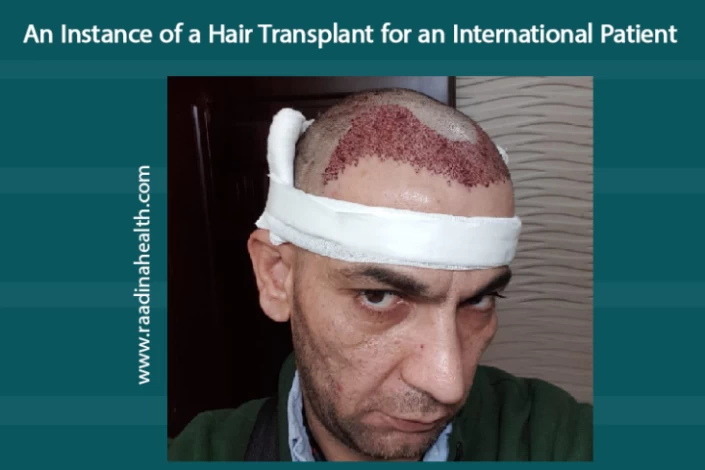
How to Prepare for a Hair Transplant?
Consider the following prior to getting a hair transplant before the surgery is being carried out:
- Prepare a detailed medical history consisting of the medications you take daily or have recently taken, your food and drug allergies, and the history of your previous hair loss treatments.
- Massage your scalp 14 days before the surgery. You should rub your head in oval movements for 10 to 15 minutes a day to increase the blood flow in the scalp, trigger the follicles to grow, and increase the elasticity of the scalp's skin.
- Avoid sun exposure and pollution. You should wear a hat or umbrella for a month before getting a hair transplant to protect your scalp from sunburn and dust.
- Avoid smoking and drinking alcohol. Avoid smoking for three days and alcohol for seven days before the surgery, as they can prolong the healing process and cause infection.
- Take your prescribed medications. Your doctor probably asks you to take specific medications to stimulate the follicles and antibiotics to prevent the infection.
- Avoid taking supplements and multivitamins. Some supplements may interfere with your hair treatment medications, so it is advised not to take OTC supplements and multivitamins for at least two weeks before the operation.
- Avoid NSAIDs and herbal teas. Blood thinner medications such as Tylenol, aspirin, and herbal teas may thin your blood and cause severe bleeding during the operation. Therefore, you should avoid them 14 days before the procedure.
- Take the necessary medical tests. If you are above 45 or have a history of life-threatening diseases, your doctor probably asks you to take an electrocardiogram (ECG) test to check your heart's rhythm or a blood test to check for your blood pressure and sugar.
- Don't get a haircut from a month before the surgery, so there will be enough donor area for the operation. Also, long hair can cover your scars and stitches after the surgery.
Hair Transplant Types and Procedures
Today, various methods of hair transplant surgery are practiced, two of which are more popular and common: FUT and FUE. In the following, different types of hair transplant surgery are introduced.
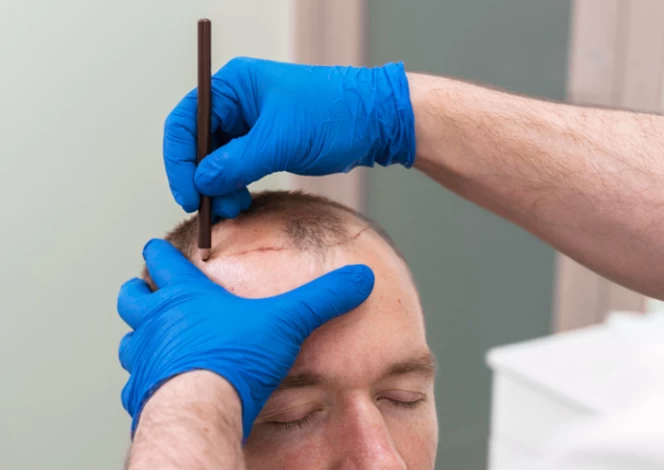
Follicular unit transplantation (FUT)
Follicular unit transplantation, commonly referred to as the FUT and strip method, is a highly practiced hair restoration surgery through which the surgeon removes a long and thin strip of tissue from the back of the scalp and removes follicular units from the tissue by stereo-microscopic dissection. Then, the tissue is divided into small parts using a magnifier and a surgical knife. Each tiny piece of tissue is then implanted into the bald spots to give a natural look to the hair. Notably, the FUT method requires stitching, so the surgeon will stitch the back of your head where the graft has been obtained.
This surgery is minimally invasive and is done under local anesthesia. Still, it takes 4 to 12 hours, depending on the size of the treating area and the number of grafts that need to be transplanted. The recovery period of FUT also takes up to 14 days, but you can return to work within a few days after the operation.
Number of sessions | Maximum of two |
Density | Maximum of 4000 grafts |
Incision and suture | Yes |
Quality of grafts | The highest quality |
Pros | High-quality grafts, No need to shave the head, High density, More Affordable |
Cons | Needs incisions, Involves bleeding and scarring |
Rest | 7 - 10 days |
SUT Hair Transplant
SUT hair transplant is much like the FUE method, with only two differences; first, in this method, special and precise devices are used to remove hair follicles and to transplant them in the bald area. By using these surgical tools, the speed of hair grafting and transplanting is much higher than other methods, and a significantly larger number of grafts can be removed. Second, in this technique, the harvested grafts are immediately placed in a special solution before being transplanted. This solution prevents the follicles from being destroyed, so the success rate of SUT is much higher than the FUE hair transplant surgery technique. In the following, some of the advantages of the SUT method are mentioned:
- It involves less pain and bleeding;
- No incisions or stitches are made in the head;
- Scarring is less than other methods;
- The speed of grafting and transplanting is high;
- The density of hair in this method is about three times that of the FUT technique;
- The hairline in this technique looks natural;
- Almost all the grafted follicles are preserved;
- The recovery period of this technique is very short.
Number of sessions | One |
Density | 3000 |
Incision and suture | No |
Quality of grafts | Higher than FIT |
Downtime | A week |
Advantages | High quality of grafts, high speed of transplantation, high density, low risks, and few complications |
Drawbacks | The head should be shaved, and the grafts have lower quality than FUT. |
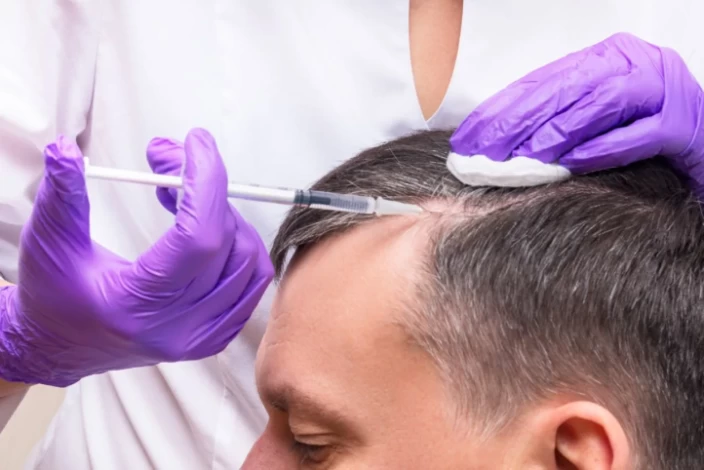
Follicular unit extraction (FUE)
Follicular unit extraction, also known as the follicular transfer method, is a minimally invasive and suture-less procedure done under local anesthesia. In this method, the surgeon first cleans the scalp and numbs its skin with small needles. Individual hair follicles are removed from the back of the head for hair transplants. Hundreds, sometimes thousands, accomplish this through microscopic "punches."
After that, the doctor makes small holes -with a blade or needle- in the receiving area and implants the follicles in the holes. When the surgery is over, your whole scalp is covered with bandages and gauze, and you can return home on the same day.
FUE is usually done in several 2 to 4-hour sessions, and its recovery takes two to three weeks. However, you can return to your daily routine almost 4 to 7 days after the surgery.
Number of sessions | Maximum of two |
Density | 1.500 to 2.500 |
Incision and suture | No |
Quality of grafts | Less than FUT |
Recovery time | Up to three weeks |
Pros | It is less risky than FUT, has fewer complications, and has a shorter and more convenient recovery period. |
Cons | Lower quality of grafts, lower hair density |
MicroFIT Hair Transplant
MicroFIT is a new, minimally invasive hair transplant method in which precise surgical tools are used to transplant the hair follicles. This method is the same as FIT but involves less stitching, bleeding, and scarring. The follicles are harvested from a four-millimeter graft in the back of the head. Usually, the surgeons do not stitch the donor area and close the wounds with the bandage.
sessions | Maximum of two |
Density | 2.500 |
Incision and suture | No |
Quality of grafts | Higher than FIT and SUT |
Rest | A week |
Advantages | Less invasive, no need to shave the head, high-density |
Drawbacks | Lower quality of grafts compared to FUT |
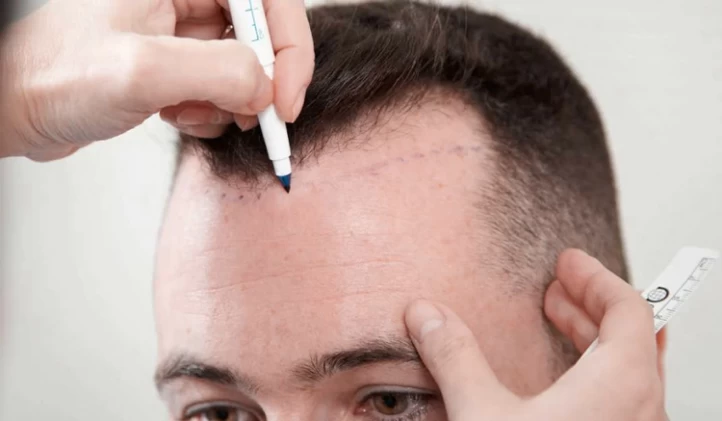
Direct Hair Implantation
Direct hair implantation, also known as DHI, is a popular and effective method of hair transplant that involves fewer sutures and has higher accuracy than other hair restoration techniques. This method is an updated version of follicular unit extraction (FUE) with a higher success rate. In this operation, the surgeon harvests up to five hair grafts and injects them into the recipient area using a special tool. As an advanced surgical device does this procedure, its accuracy and speed are higher than normal, and its outcomes are more natural-looking.
What to Expect After Hair Restoration Surgery?
Immediately after hair restoration surgery, your scalp is red, itchy, swollen, tight, and painful. You can take pain medications and be prescribed anti-inflammatory drugs to minimize the soreness and swelling. Most people can return to work two days after the hair transplant surgery but take a week off if they need more time to recover.
Usually, the transplanted hair falls two or three weeks after the surgery, but you can expect about a half-inch of growth per month after the sixth month. Remember that it takes 6 to 12 months for new hair to grow, so you must be patient. Meanwhile, you should take your prescribed hair growth medications to help your hair regrow.

Hair Transplant Growth Timeline
First Days
Patients will experience some redness and swelling after a hair transplant in the recipient area. The transplanted hair follicles may appear slightly raised or bumpy, which is temporary and will resolve over time.
Weeks 1-2
In the first two weeks following the procedure, patients may notice that the transplanted hairs start to shed. This is known as shock loss, a natural part of the hair transplant process. It's important not to be alarmed by this shedding as it is temporary, and new hair growth will occur.
Months 3-4
Around three to four months after the procedure, patients will begin to see initial signs of new hair growth. Small, thin hairs called vellus hairs will start emerging from the transplanted follicles. These hairs are often colorless or very light and may initially be barely noticeable. However, they indicate that the transplanted follicles successfully establish themselves in their new location.
Months 6-9
Patients can expect more significant hair growth between six to nine months post-surgery. The vellus hairs will gradually thicken and darken, becoming more visible and resembling natural hair strands. At this stage, patients can start styling their hair as desired since it has grown long enough to be shaped and trimmed.
Month 12
Most patients will have achieved substantial hair growth by one year after the transplant procedure. The transplanted hairs should have reached their full length and thickness, blending seamlessly with natural hair. Patients can enjoy a fuller head of hair with improved density and coverage in areas previously affected by baldness or thinning.
Hair Transplant Recovery
The length of time it takes to recover from a hair transplant depends on the extent of the procedure, your level of preparation, and how well you take care of your head following the procedure. Take into account the following advice to hasten healing and improve outcomes following hair transplant surgery:
·After hair replacement surgery, it's common to experience pressure and pain in the scalp, which can be managed with over- the -counter pain relievers;
·The gauze and bandages will be taken off a day or two after the procedure. Never remove or alter the bandages without your doctor's approval;
·After the procedure, refrain from washing your head for 48 hours. Then, use the shampoos that your doctor has recommended.
·If stitches were used during your procedure, they would be taken out seven to ten days after the procedure;
·For four weeks, stay away from physically demanding activities and contact sports as they may result in bleeding, increased swelling, and bruises;
·It is advised to refrain from sexual activity for ten days as it will increase blood flow in your scalp and cause the incisions to bleed;
·Do not bend, lean, or lift heavy objects for seven days;
·Keep your scalp free of debris, dust, perspiration, sunlight, and bacteria;
·Don't scrub it when taking a bath;
·Take your prescription drugs as directed, including antibiotics, anti-inflammatory drugs, and hair-growth medications;
·Schedule follow-up appointments to monitor the growth of your hair and tissues.
·Eat a nutritious diet following a hair transplant. Increase your intake of vitamins and protein to speed up your recovery and lower the risk of surgical complications. Until you are completely recovered, keep adding fresh vegetables, fish, and chicken to your plate.

Hair Transplant Graft
Hair transplant grafts are typically performed under local anesthesia. Each treatment session could last anywhere from two to eight hours, depending on how many hairs are implanted.
Greater areas of hair loss may require up to 4,000 hair follicles per session, although 1,000 to 2,000 are usually transplanted in a single session. A session may last several hours, and many clients choose to have two or three separate sessions.
The following steps are frequently involved in this method:
• To facilitate management, the hair on the "donor" side of the scalp is trimmed short.
• The doctor administers anesthesia to the thickly haired area of the head.
• The surgeon removes tiny pieces of the hair-bearing scalp and transplants them to the proper spot, which is usually the front of the scalp above the forehead.
•A number of instruments can be used to remove the donor skin. For example, a round tube (punch) or a scalpel could be used. A single punch graft may produce two to fifteen hairs, depending on the size of the tube. Significantly longer strip grafts can have up to 40 hairs, whereas slit grafts can have 4–10 hairs.
Hair Transplant Risks and Side Effects
Since hair transplant is a minimally invasive procedure, it has limited risks and side effects that usually go away a couple of weeks after the surgery. In the following, some of the hair transplant side effects are mentioned:
- Mild bleeding;
- Swelling of the scalp;
- Infection;
- Scarring;
- Redness of the scalp;
- Bruising around the incisions and under the eyes;
- Formation of crust on the donor and treated site;
- Change in the sensation of the scalp;
- Folliculitis (bacterial or fungal infection of the follicles);
- Temporary loss of transplanted hair;
- Pus drainage from the incisions;
- Allergic reaction to the anesthetics;
- Damage to nerves and blood vessels in the scalp;
- Death of skin graft;
- Itching.
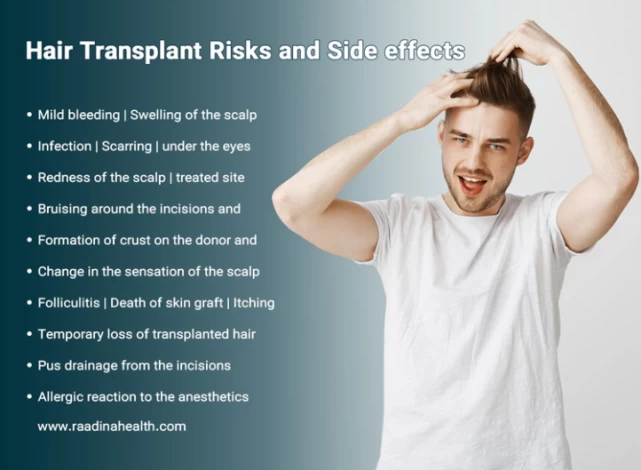
In some rare cases, the patient may also face keloid and atrophic scars, pimples on the scalp, thinning of hair in the donor site, bleeding, and excessive crust and crust cyst formation on the scalp. If you want more information about hair transplant side effects, follow this article.
Hair Transplant Success Rate
The success rate of hair transplant procedures varies depending on several factors, including the surgeon's expertise, the technique used, and the patient's characteristics. Generally, hair transplant procedures have shown high success rates, with most patients experiencing significant hair growth and improved appearance. Advanced techniques such as follicular unit extraction (FUE) and follicular unit transplantation (FUT) have enhanced success rates by providing natural-looking results with minimal scarring.
When Is the Best Time for a Hair Transplant?
When considering a hair transplant, age is an important factor to evaluate. There is no definitive age restriction for undergoing a hair transplant. Still, it is generally advised for individuals to wait until their hair loss pattern has stabilized, which usually happens in their late 20s or early 30s. Undergoing the procedure too early, particularly in the early 20s, can be problematic as hair loss might continue, leading to the need for additional treatments in the future. Younger patients might benefit from non-surgical interventions or medications like finasteride and minoxidil to manage hair loss until they become better candidates for surgery. Conversely, older patients can also successfully undergo hair transplants, provided they have sufficient donor hair and are in good overall health. Consulting with a qualified hair restoration specialist is crucial to determine the ideal timing for the procedure, ensuring optimal and lasting results. If you want more information about proper age for hair transplant, read this article.
Long-term Outlook After Hair Transplantation Surgery
Almost all hair replacement surgeries are successful, but the hair follicles take 6 to 12 months to take root and grow naturally. Usually, the transplanted hair strands fall two to four weeks after the surgery, but they will regrow several weeks later. In most cases, the scars will be covered by previous hair strands, but if they are visible, you can use prescribed ointments to make them fade away sooner.
Second hair transplant
A second hair transplant is a procedure that can be performed after an initial hair transplant procedure to enhance the patient's hair density further or address any hair loss concerns.
During a second hair transplant, hair follicles are harvested from a donor area and transplanted into the recipient area. The procedure is similar to the first hair transplant. However, the surgeon should consider the existing grafts and any scarring from the previous transplant in the second hair transplant surgery.
The success of a second hair transplant depends on various factors, including the patient's natural hair density, the quality of the donor's hair, the skills of the surgeon, and proper post-operative care. Patients must have realistic expectations and consult with a qualified surgeon to determine if they are suitable candidates for a second hair transplant.
What Are the Finest Hair Transplant Procedures in Iran?
In this article, we got acquainted with how a hair transplant works and different ways of hair transplanting. We should also consider choosing the right doctor and treatment center as they significantly impact hair transplantation's success rate.
Accordingly, having numerous knowledgeable and competent surgeons, Iran is one of the top ten countries in hair transplant surgery. You can get hair transplantation in one of the high-standard clinics in Tehran, Shiraz, Mashhad, Isfahan, and Yazd and benefit from their quality, affordable healthcare services. As far as price is concerned, Iran is the cheapest country for hair transplant surgery. The average cost of this procedure is 1,500 USD, including doctor's fees, clinic charges, and medications.
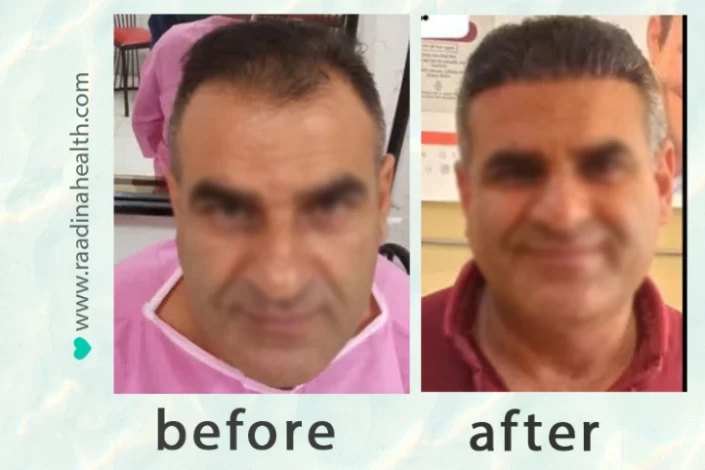
FAQs about Hair Transplant Surgery
1) Is a hair transplant painful?
During the hair transplant surgery, the scalp skin gets numb with local anesthetics so that you won't feel any pain during the operation. However, you probably experience mild to moderate soreness in your head for a week after the surgery.
2) Will I have dense hair after hair transplant surgery?
The density of the transplanted hair depends on the number of follicles implanted, the type of hair (curly or straight), hair quality, and scalp skin's elasticity.
3) Is the result of a hair transplant permanent?
A hair transplant is a long-lasting operation, and its results will last over 20 years.
4) How much is a hair transplant?
The hair transplant cost depends on the number of grafts, the extent of the balding area, the quality of the hair follicles, the hospital charge, and the surgeons. In general, hair restoration surgeries are considered costly procedures.
5) What is the best hair transplant method for women?
The best hair transplant method for women is follicular unit transplantation (FUT) because in this method, there is no need to shave the head, and the transplanted hair looks very natural.
6) How many grafts will I need?
The number of grafts required for a hair transplant might differ depending on various factors, such as the degree of hair loss, the desired density, and the patient's specific characteristics. Generally, 1,000 to 3,000 grafts may be needed for a hair transplant. Nevertheless, depending on their unique requirements and goals, some people may require more or fewer grafts. The best course of action is to speak with a skilled hair transplant surgeon who can evaluate your condition and provide you with a precise estimate of the number of grafts required for your case.
7) Do hair transplants cause scarring?
Although some scars after FUE and FUT hair transplants are visible, most are not. FUT scars are larger and become less obvious with time, but FUE scars are smaller and disappear as hair grows. The degree of scarring depends on the surgeon's expertise and training, and by visiting specialized hair clinics, surgeons go above and beyond to minimize the formation of scars.
 WhatsApp
WhatsApp
 Telegram
Telegram
 Facebook
Facebook
 Email
Email








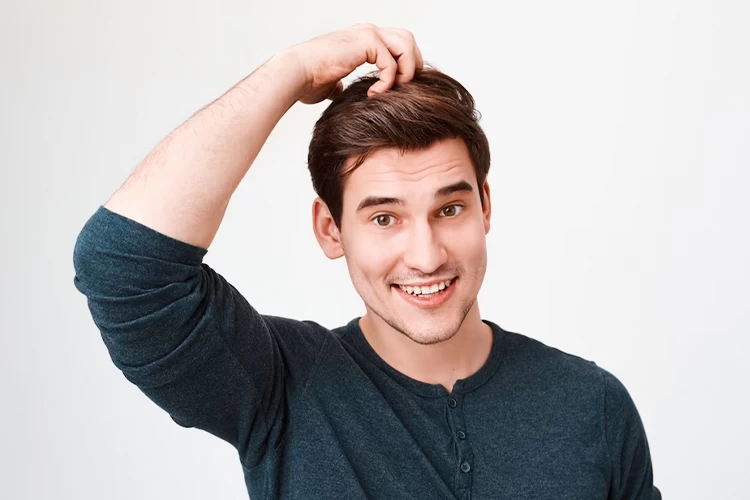



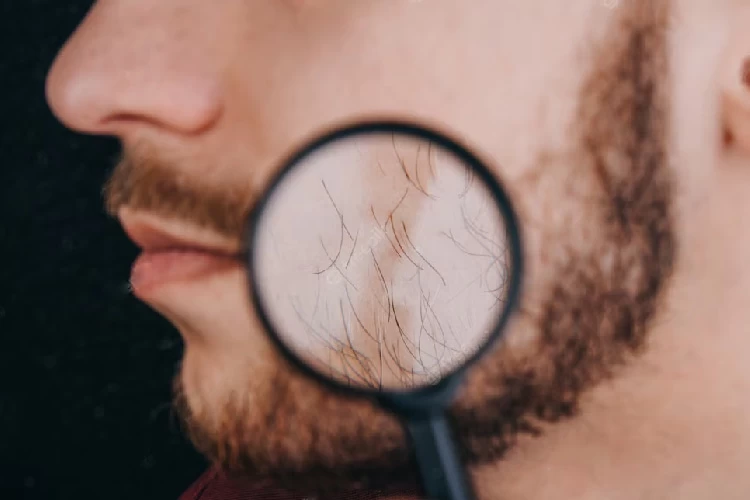
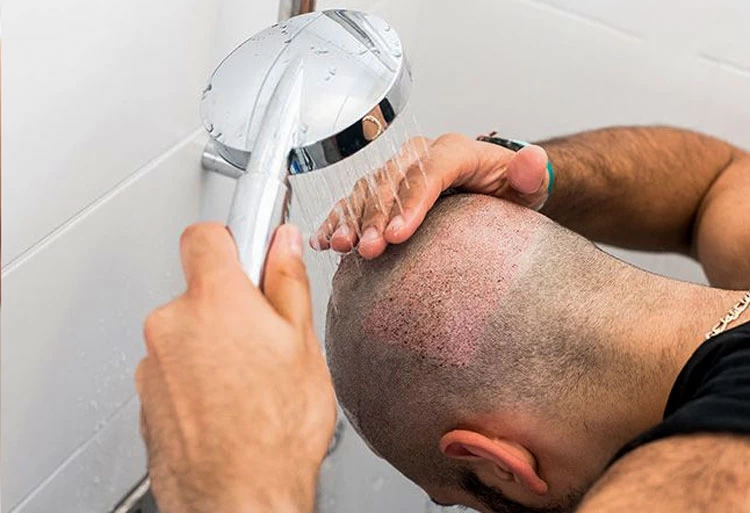
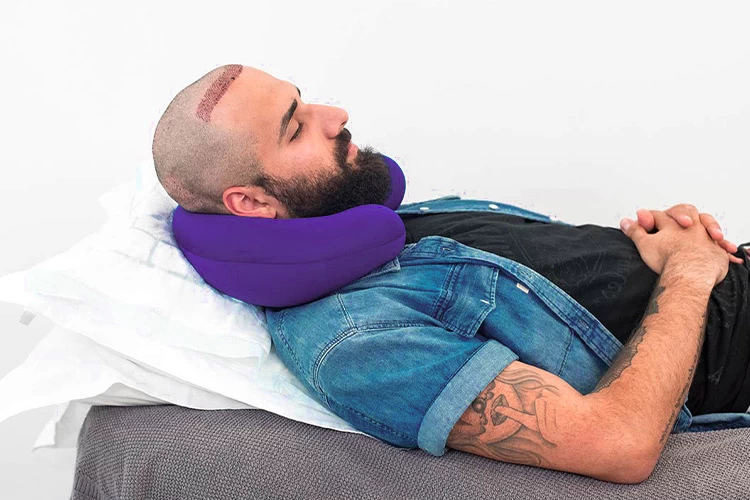


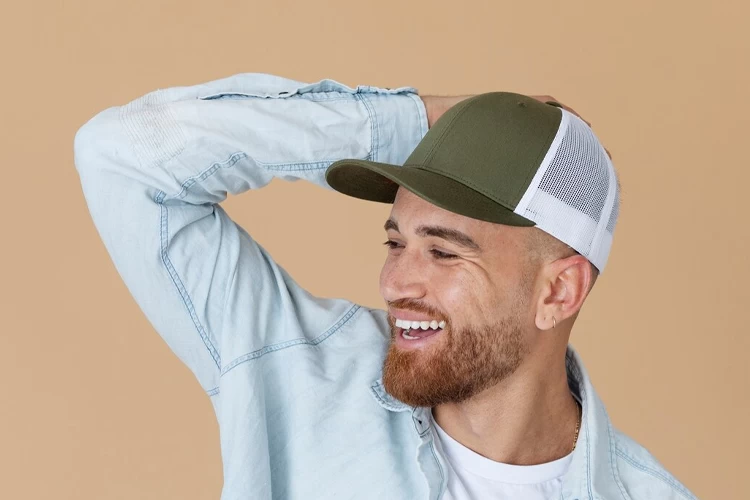
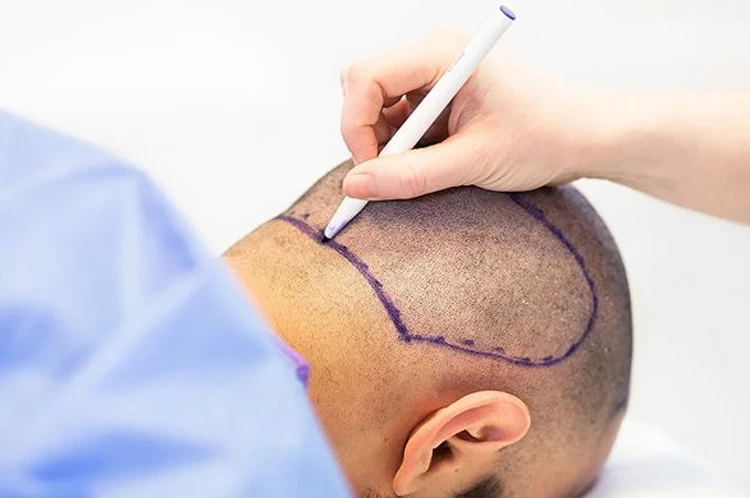

User
-Hi there, I am about 40 years old, and my hair started falling out at young ages, and now I want to grow hair. The question is, considering the high cost of this operation and considering that I have to go to another city for a hair transplant, is this operation a good result for me? I mean, do hair transplants last, or is it possible that I will face the pattern of male hair loss again? Thanks.
Habib Ebrahimi
-Hello,
It is true that hair transplants can last a lifetime. The transplanted hair is typically resistant to the hormone that causes male pattern baldness, so it is less likely to fall out. However, it's important to note that the success and longevity of a hair transplant can vary depending on various factors such as the individual's age, overall health, and the skill of the surgeon performing the procedure. Additionally, some natural hair loss can continue even after a transplant, so additional treatments or touch-up procedures may be needed in the future.
User
-Hi. I want to do hair transplant but my problem is that my work is too busy and I can't take a long leave. Could you tell me how many days will I need time off work?
Habib Ebrahimi
-Hello dear friend,
Depending on the type of hair transplant procedure and your job, it may be possible to return to work the next day.
It's best to discuss your specific situation with a qualified hair transplant surgeon, as they can provide you with a more accurate timeline based on your individual needs and the type of procedure you'll be undergoing.